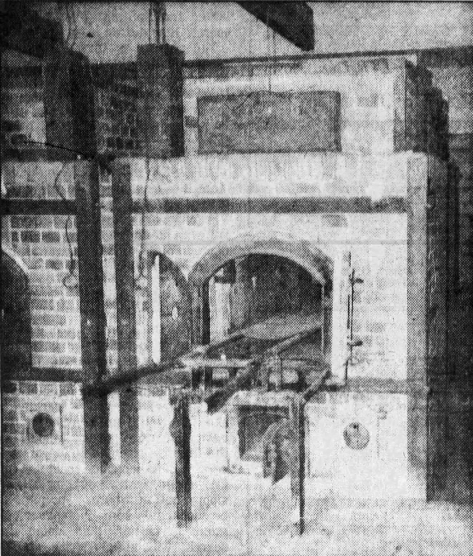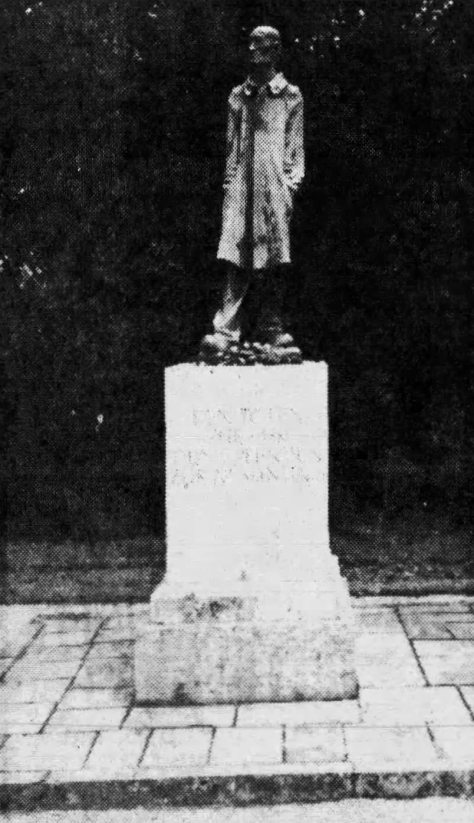Dachau: A Silent Reminder of Nazi Brutality
By Joseph Hanneman
Journal Times
DACHAU, Germany — Forty-six years after it was liberated from Adolf Hitler’s brutal regime, an unsettling quiet hangs over the massive grounds of Germany’s first Nazi concentration camp.
A cool wind rustles through the dead leaves of last season. It whispers what seems to be an audible tale of the cruelty and atrocities committed here between 1933 and 1945.
Village near Munich
The picturesque village of Dachau, a 1,200-year-old community in southern Bavaria, is located only a few miles northeast of Munich. The area has a rich culture of its own, but the world will always associate Dachau with death.
Dachau records show 31,957 registered deaths between 1933 and 1945, but many historians believe the number is much higher. The tally does not include the scores who arrived dead in train cars from other camps.

When American soldiers liberated the camp on April 29, 1945, there were bodies all over the camp. A mass grave was established near the camp, where about 4,000 people were buried shortly after liberation.
The concentration camp site, on the northern outskirts of Dachau, has been maintained by the Committee International de Dachau as a permanent memorial and reminder of what happened here.
Directly inside the original electrified barbed wire fence is a museum that opened in 1960. The rest of the site opened as a memorial in 1965.
The museum holds haunting pictures of the torture, starvation and death that were everyday occurrences here. A stunning film was confiscated from German soldiers when the Allies liberated the camp.
In the center of the museum is a heart-rending picture of an emaciated prisoner laying flat on his stomach, arms outstretched, The look on his face seems like a silent cry for help.
Gruesome Pictures
Other pictures show stacks of corpses waiting for incineration at Dachau’s two crematorium buildings, piles of valuables pilfered from prisoners, and two men — hung upside down — being beaten by smiling Nazi SS guards.
There are also depictions of the cruel experiments carried out by the SS, which stands for Schutzstaffel — Hitler’s elite police. Some prisoners were put in special suits to determine how they reacted to depressurization.
An original torture rack stands in the center of one room of the museum.
In a display case hang examples of the identification badges prisoners were forced to wear. Jews wore stars of David. Non-German prisoners wore colored chevrons: green meant professional criminal, black meant “asocial,” violet was for “Bible inquirers,” and pink was for homosexuals.
Outside, the cement foundations of the 34 barracks stretch for hundreds of yards. The barracks were decrepit and rotting when the camp was liberated. They were torn down, but two were rebuilt as part of the memorial.

Each building was designed for 80 prisoners, yet at the height of the war, some held more than 400.
In the courtyards between the barracks, prisoners once stood for roll call. Sometimes, they stood motionless for hours in rain or snow, the so-called “standing torture” that claimed many lives.
Even the dead had to show up for roll call, dragged by compatriots who were forced to make sure the deceased were counted each day.
Ironic motto
The original front gate still open-, adorned in iron by the camp motto – Arbeit Macht Frei – a cruelly ironic phrase that roughly means, “Work shall make you free.”
Just outside the perimeter fence are the two crematorium buildings that were once so busy that rotting bodies stacked up in a gruesome backlog.
The oven doors stand open. On the hinge of one door hangs a single, drying rose. A wreath hangs on an oven in the adjacent room.
Prisoners who died here were often shot to death. Others died of disease or torture. No one was gassed to death at Dachau, although a shower room for gassing had been installed. Prisoners marked for gassing were sent to Linz, Austria.
Several chapels were erected on the site in the 1960s, as if in an attempt to heal the destruction wrought at the camp. The Carmelite order of nuns built a convent here.
A huge granite memorial near the entrance sums up the reason the camp has been maintained for so long:
“May the example of those who were exterminated here between 1933-1945 because they resisted Nazism help to unite the living for the defense of peace and freedom, and in respect for their fellow men.” ♦
– This article originally appeared in the April 28, 1991 issue of the Racine Journal Times. View the original news page.

